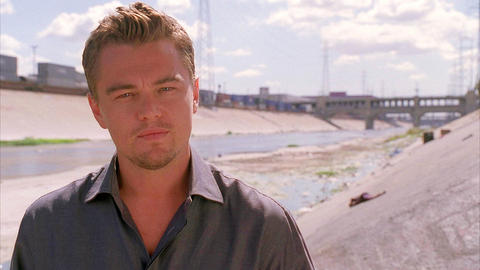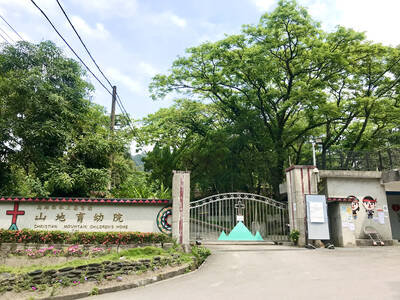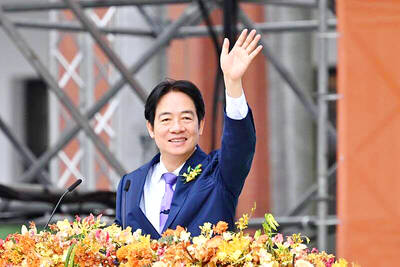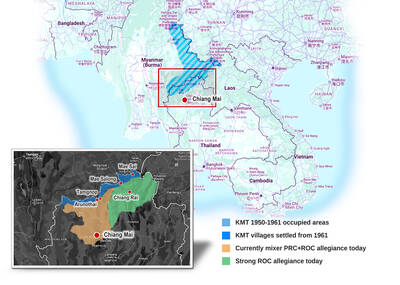Yeah, yeah, yeah, the environment, blah, blah, blah, melting ice caps. To judge from all the gas-guzzlers still fouling the air and the plastic bottles clogging the dumps, it appears that the news that we are killing ourselves and the world with our greed and garbage hasn't sunk in. That's one reason The 11th Hour, an unnerving, surprisingly affecting documentary about our environmental calamity, is such essential viewing. It may not change your life, but it may inspire you to recycle that old slogan-button your folks pinned on their dashikis back in the day: If you're not part of the solution, you're part of the problem.
The problem looks overwhelming, literally, as demonstrated by the images of overflowing landfills and sickeningly polluted bodies of water that flicker through the movie like damning evidence. Structured in mainstream fiction-film fashion (in other words, like a term paper), it opens with an introduction that presents the case, builds momentum with an absorbing analytical middle section and wraps up with just enough optimism that I didn't want to run home and stick my head in an energy-efficient oven. No matter how well intentioned, political documentaries that present problems without real-life, real-time, real-people solutions - an 800 number, an address, something - just add to the noise (pollution), becoming another title on some filmmaker's resume as well as a temporary salve for the audience's guilt.
Written and directed by the sisters Leila Conners Petersen and Nadia Conners, and narrated on- and off-camera by Leonardo DiCaprio, who served as one of the producers, The 11th Hour attempts to stave off helplessness, and the nihilism that often follows it, mostly by appealing to our reason.

PHOTO: COURTESY OF WARNER BROS
If your head isn't lodged in the sand, much of what's said in the movie will be agonizing and familiar. Gasping children, disappearing animals, gushing oil, billowing smoke, dying lakes, emptying forests, warming weather - the list of ills is numbingly familiar. In the movie's eye-catching opener, the directors riffle through a veritable catalog of timely snapshots, some obvious, others less so.
Effectively blunt, this sequence provoked a colleague to invoke the name of the avant-garde giant Stan Brakhage, but the truer visual and structural model here is a film like Koyaanisqatsi, with its streaming global landscapes. The difference is that the images in The 11th Hour are pointedly horrifying, not reassuring, pacific or aestheticized.
That can make it tough to watch, which the directors clearly know. They whip through the pictures and the interviews fast - at times a little too fast - and keep the information flowing as quickly as the visuals. This swift, steady pace means that you receive a lot of bad news from a lot of different sources. The ecologist Brock Dolman explains, "When we started feeding off the fossil fuel cycle, we began living with a death-based cycle." From there the topic nimbly jumps to climate change, national security (courtesy the former director of the CIA, James Woolsey), Hurricane Katrina, asthma and the stunning news from the oceanographer and author Sylvia Earle that "we've lost 90 percent of most of the big fish in the sea."
Yes, it's bad, but it's not over yet. Many of those same sober talking heads also argue with equal passion that we can save ourselves, along with the sky above us and the earth below. The capacity for human beings to fight, to rise to the occasion, as Woolsey notes, invoking America's rapid, albeit delayed jump into World War II, gives hope where none might seem possible.
It is our astonishing capacity for hope that distinguishes the film and speaks so powerfully because it is this all-too-human quality that may finally force us to fight the good fight against the damage we have done and continue to do. As the saying goes, keep hope alive - and if you're holding this review in your hands, don't forget to recycle the paper.

May 18 to May 24 Pastor Yang Hsu’s (楊煦) congregation was shocked upon seeing the land he chose to build his orphanage. It was surrounded by mountains on three sides, and the only way to access it was to cross a river by foot. The soil was poor due to runoff, and large rocks strewn across the plot prevented much from growing. In addition, there was no running water or electricity. But it was all Yang could afford. He and his Indigenous Atayal wife Lin Feng-ying (林鳳英) had already been caring for 24 orphans in their home, and they were in

President William Lai (賴清德) yesterday delivered an address marking the first anniversary of his presidency. In the speech, Lai affirmed Taiwan’s global role in technology, trade and security. He announced economic and national security initiatives, and emphasized democratic values and cross-party cooperation. The following is the full text of his speech: Yesterday, outside of Beida Elementary School in New Taipei City’s Sanxia District (三峽), there was a major traffic accident that, sadly, claimed several lives and resulted in multiple injuries. The Executive Yuan immediately formed a task force, and last night I personally visited the victims in hospital. Central government agencies and the

Australia’s ABC last week published a piece on the recall campaign. The article emphasized the divisions in Taiwanese society and blamed the recall for worsening them. It quotes a supporter of the Taiwan People’s Party (TPP) as saying “I’m 43 years old, born and raised here, and I’ve never seen the country this divided in my entire life.” Apparently, as an adult, she slept through the post-election violence in 2000 and 2004 by the Chinese Nationalist Party (KMT), the veiled coup threats by the military when Chen Shui-bian (陳水扁) became president, the 2006 Red Shirt protests against him ginned up by

As with most of northern Thailand’s Chinese Nationalist Party (KMT) settlements, the village of Arunothai was only given a Thai name once the Thai government began in the 1970s to assert control over the border region and initiate a decades-long process of political integration. The village’s original name, bestowed by its Yunnanese founders when they first settled the valley in the late 1960s, was a Chinese name, Dagudi (大谷地), which literally translates as “a place for threshing rice.” At that time, these village founders did not know how permanent their settlement would be. Most of Arunothai’s first generation were soldiers